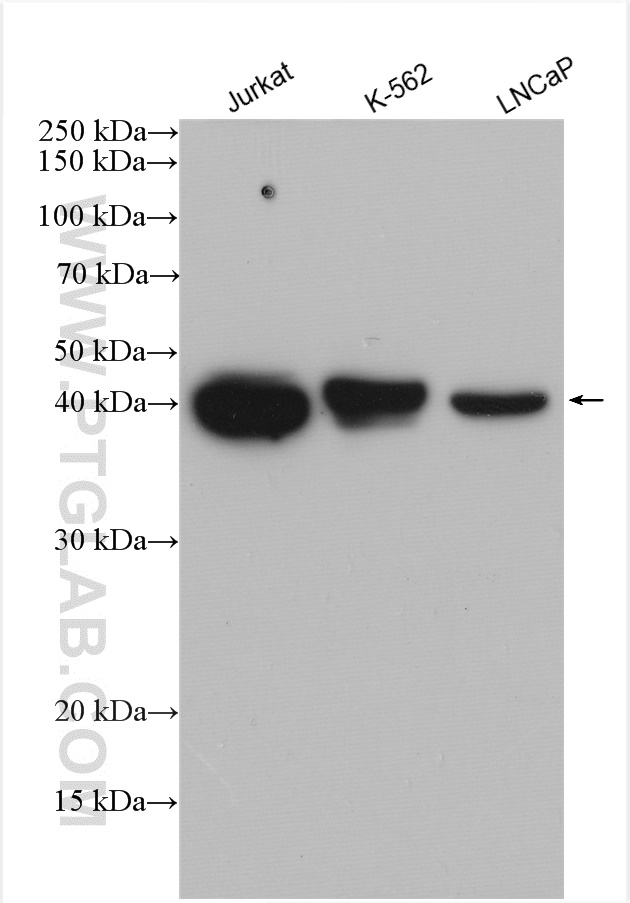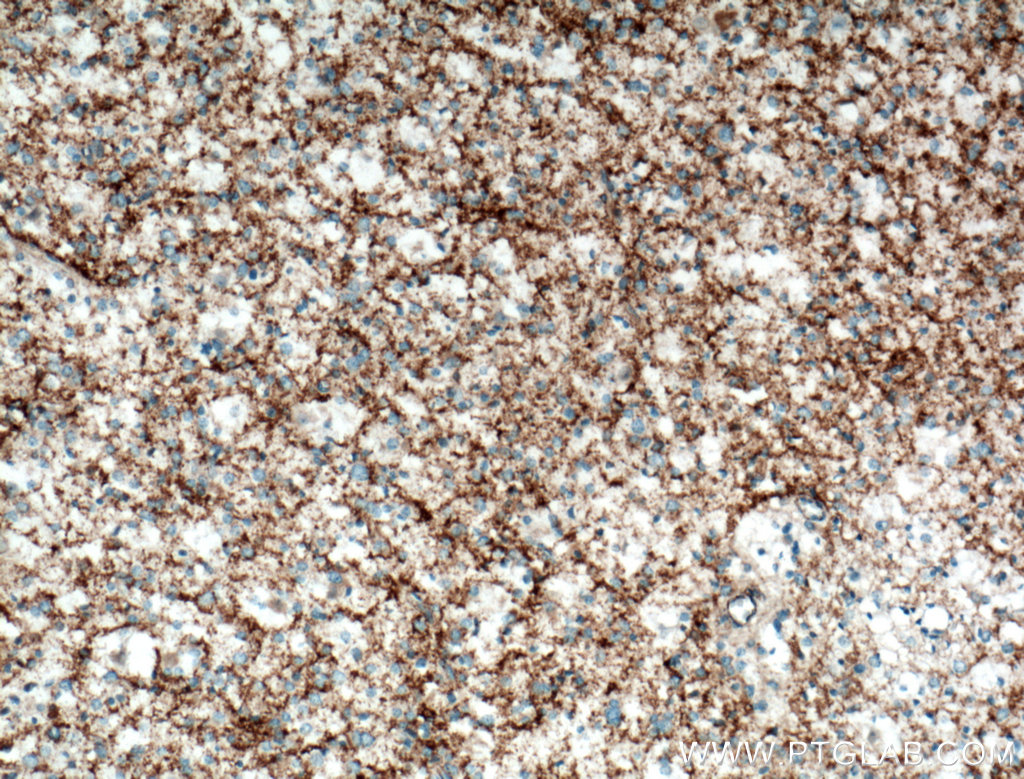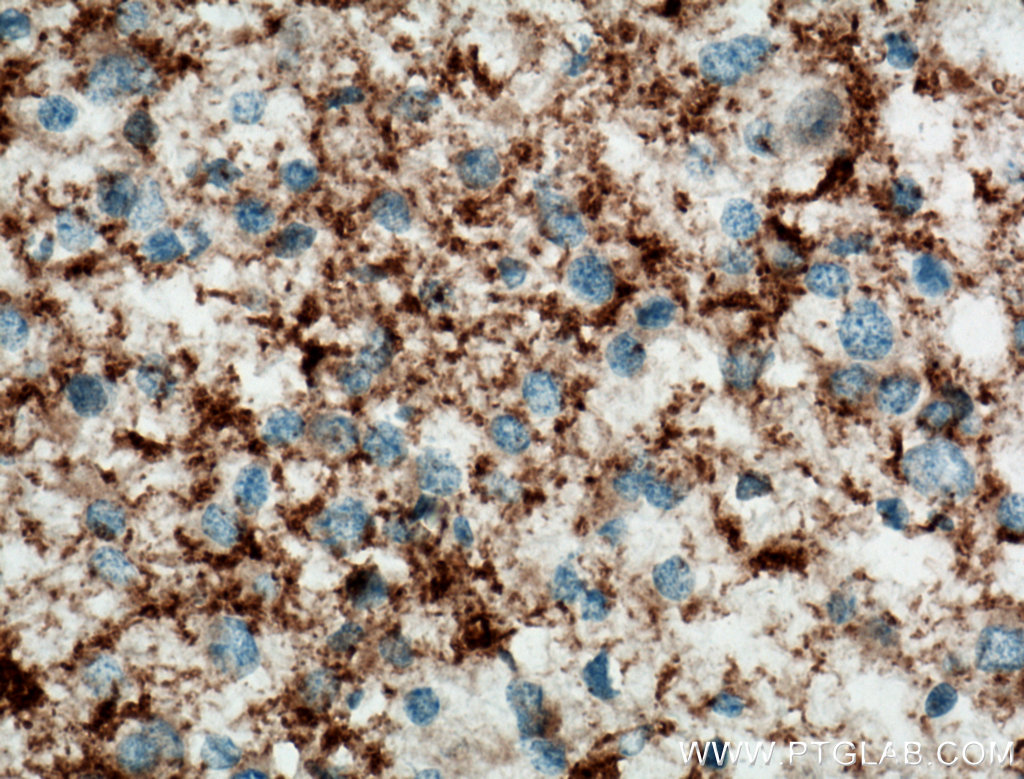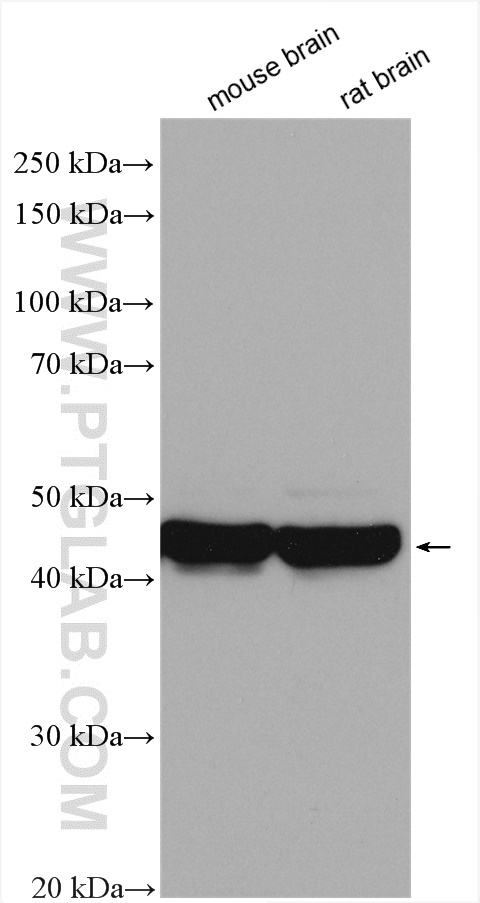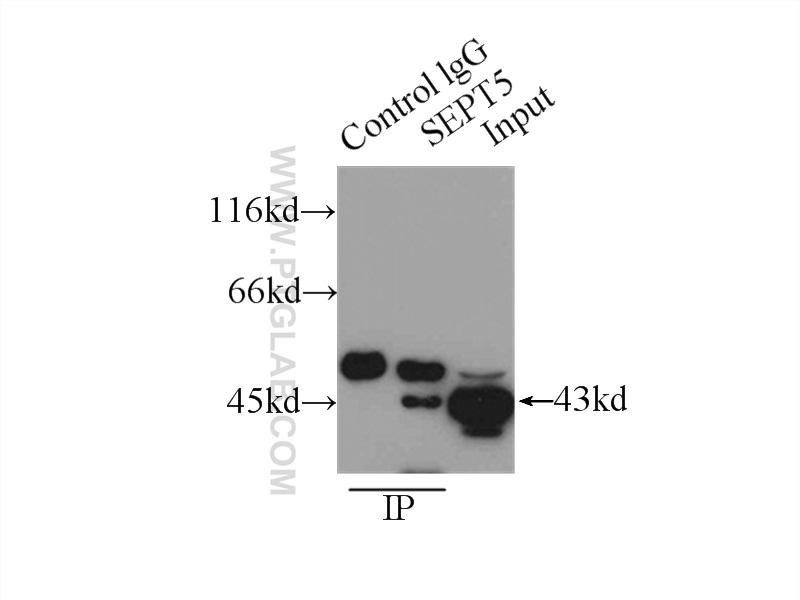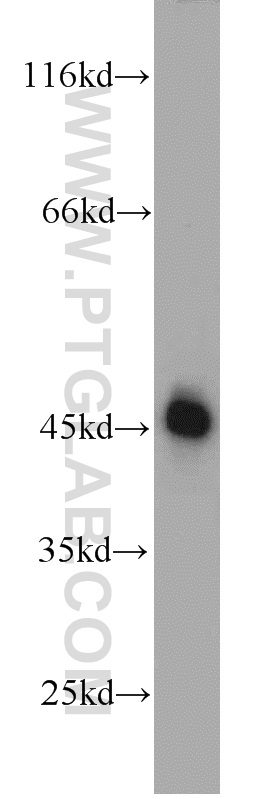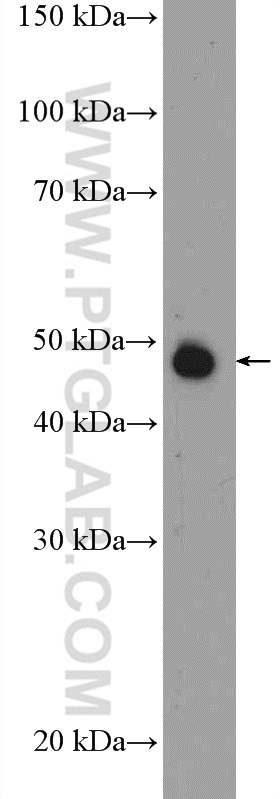验证数据展示
经过测试的应用
| Positive WB detected in | Jurkat cells, mouse brain tissue, human brain tissue, NIH/3T3 cells, rat brain tissue, K-562 cells, LNCaP cells |
| Positive IP detected in | mouse brain tissue |
| Positive IHC detected in | human gliomas tissue Note: suggested antigen retrieval with TE buffer pH 9.0; (*) Alternatively, antigen retrieval may be performed with citrate buffer pH 6.0 |
推荐稀释比
| 应用 | 推荐稀释比 |
|---|---|
| Western Blot (WB) | WB : 1:500-1:2000 |
| Immunoprecipitation (IP) | IP : 0.5-4.0 ug for 1.0-3.0 mg of total protein lysate |
| Immunohistochemistry (IHC) | IHC : 1:50-1:500 |
| It is recommended that this reagent should be titrated in each testing system to obtain optimal results. | |
| Sample-dependent, Check data in validation data gallery. | |
产品信息
11631-1-AP targets Septin 5 in WB, IHC, IF, IP, ELISA applications and shows reactivity with human, mouse, rat samples.
| 经测试应用 | WB, IP, IHC, ELISA Application Description |
| 文献引用应用 | WB, IF, IP |
| 经测试反应性 | human, mouse, rat |
| 文献引用反应性 | human, mouse, rat |
| 免疫原 | Septin 5 fusion protein Ag2205 种属同源性预测 |
| 宿主/亚型 | Rabbit / IgG |
| 抗体类别 | Polyclonal |
| 产品类型 | Antibody |
| 全称 | septin 5 |
| 别名 | CDCREL, CDCREL 1, CDCREL1, H5, Peanut like protein 1, PNUTL1, SEPT5, Septin 5, septin5 |
| 计算分子量 | 369 aa, 43 kDa |
| 观测分子量 | 40-43 kDa |
| GenBank蛋白编号 | BC025261 |
| 基因名称 | Septin 5 |
| Gene ID (NCBI) | 5413 |
| RRID | AB_2301692 |
| 偶联类型 | Unconjugated |
| 形式 | Liquid |
| 纯化方式 | Antigen affinity purification |
| UNIPROT ID | Q99719 |
| 储存缓冲液 | PBS with 0.02% sodium azide and 50% glycerol , pH 7.3 |
| 储存条件 | Store at -20°C. Stable for one year after shipment. Aliquoting is unnecessary for -20oC storage. |
背景介绍
Septin 5, a septin family member formerly called cell division control related protein 1 (CDCrel), is encoded in the 200 kb region and is abundantly expressed in the developing and adult brains of mice and humans. Although its constitutive deletion does not cause detectible structural or developmental abnormalities in the mouse brain, Septin 5 has been implicated in subtle neuronal and behavioral functions. Septin 5 is expressed in presynaptic terminals and exerts negative regulatory control over neurotransmitter release by binding to SNARE-protein, which has been implicated in neuropsychiatric disorders (PMID: 19240081). Septin 5 has 2 isoforms with the molecular mass of 39 and 43 kDa.
实验方案
| Product Specific Protocols | |
|---|---|
| WB protocol for Septin 5 antibody 11631-1-AP | Download protocol |
| IHC protocol for Septin 5 antibody 11631-1-AP | Download protocol |
| IP protocol for Septin 5 antibody 11631-1-AP | Download protocol |
| Standard Protocols | |
|---|---|
| Click here to view our Standard Protocols |
发表文章
| Species | Application | Title |
|---|---|---|
J Neurosci Cyclin-dependent kinase 5 phosphorylation of human septin SEPT5 (hCDCrel-1) modulates exocytosis. | ||
Neurobiol Dis S327 phosphorylation of the presynaptic protein SEPTIN5 increases in the early stages of neurofibrillary pathology and alters the functionality of SEPTIN5. | ||
Front Mol Neurosci Integrated proteomics and metabolomics analysis of D-pinitol function during hippocampal damage in streptozocin-induced aging-accelerated mice | ||
Cell Signal SEPT5 overexpression predicts poor prognosis and promotes progression through feedback regulation of HIF-1α in clear cell renal cell carcinoma
| ||
Cells Presynaptic Vesicle Protein SEPTIN5 Regulates the Degradation of APP C-Terminal Fragments and the Levels of Aβ.
| ||
Molecules Synergistic Neuroprotective Effect of Endogenously-Produced Hydroxytyrosol and Synaptic Vesicle Proteins on Pheochromocytoma Cell Line Against Salsolinol. |
